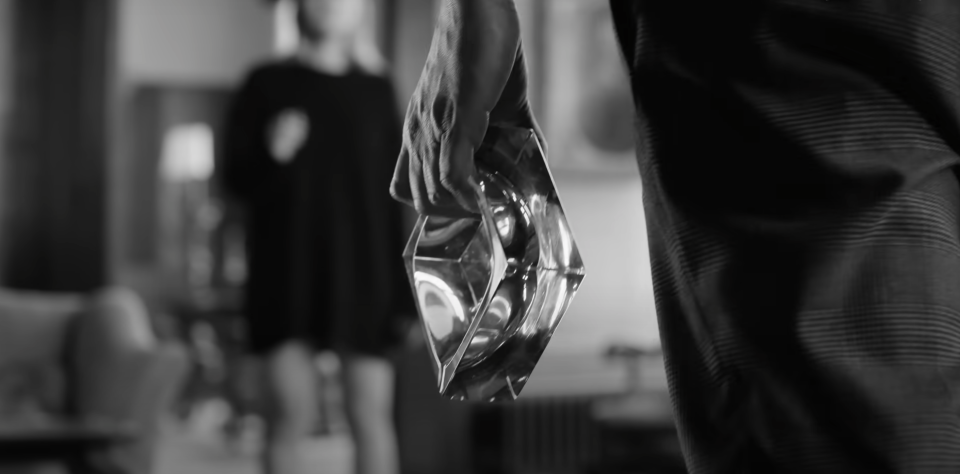In ‘Ripley,’ Objects Can Be Revealing (and Not Just That Swimsuit)

- Oops!Something went wrong.Please try again later.
[Editor’s note: The below article contains spoilers for “Ripley.”]
Tom Ripley is an aesthete — but America’s favorite fictional sociopath doesn’t initially start out as one in Steve Zaillian’s eight-episode adaptation of “The Talented Mr. Ripley.” The Tom in Patricia Highsmith’s novel, however, had an almost moral repugnance for anything second-rate or unpleasing from the start; he never would have chosen the purple paisley dressing gown Ripley is so pleased by early in the Netflix series.
More from IndieWire
Maya Hawke Says 'Stranger Things' Final Season Will 'Answer' Lingering Questions
Netflix's Film Division Under Dan Lin Will Be Organized by Genre
But Andrew Scott’s Ripley is a fast learner once he arrives in Italy to convince Dickie Greenleaf to return to NYC — Dickie’s fat fountain pen doesn’t stand a chance once Tom eyes it — and he quickly picks up a taste for what the kids now call “quiet luxury.” “In the novel, Tom is immediately drawn to Dickie’s ring,” Giovanni Casalnuovo (who designed the costumes alongside Maurizio Millenotti) told IndieWire. “It’s more than just an accessory. The description suggests it embodies Dickie’s entire lifestyle, a life of wealth and privilege that Tom covets. The ring becomes a symbol of everything Tom desires but feels he lacks.”
In the novel, Highsmith described the rings as “a large rectangular green stone set in gold on the third finger of his right hand, and on the little finger of the other hand a signet ring, larger and more ornate than the signet Mr. Greenleaf had worn.”
For this “Ripley” ring, the team looked at 1950s magazines and photographs for inspiration, translating them into sketches and then, with a jeweler, into prototypes. “Finally, working closely with the director, we identified the perfect ring, one that captured the essence of the era and Dickie’s lifestyle,” Casalnuovo said. “The final ring wasn’t just any prop — it was a key element.”
The rings are even more striking when considered against the backdrop of Tom meeting Dickie and Marge for the first time on the beach. Already out of place, Tom compounds his mistake by buying and wearing a revealing swimsuit that marks him not just as uncomfortable in his own skin but (possibly an even greater sin) tasteless.
In Highsmith’s novel, the swimsuit is “a black-and-yellow thing hardly bigger than a G-string.” On “Ripley,” a smiling storekeeper convinces Tom to buy a swimsuit of the kind that would eventually define the International Male catalog. That is to say, it’s meant to look at and not wear.
“The swimsuit Tom chooses for the beach should clash noticeably with Dickie’s and Marge’s styles,” Casalnuovo said. “Even though Tom might believe he picks the perfect outfit, it ultimately will make him appear out of place. Black and white presented an additional challenge, as we couldn’t rely on color to differentiate the costumes. To overcome this, we focused on silhouettes, textures, and patterns.”
Unable to use a vintage option, the costume team created a range of prototypes to create the perfect contrast for Marge and Dickie’s airy white beach attire. That’s what they’re still wearing when they bring Tom to Dickie’s apartment for lunch — which is where Tom first encounters a Picasso that will weave in and out of the narrative.
“Originally, Steve had written it as a pair of smaller drawings,” “Ripley” production designer David Gropman told IndieWire. “And we went down that route. We had to go through the estate and see what paintings we could use and what paintings we could afford to pay the rights on. But in the end, and I think rightfully so, it has to be big to make the statement.” The team eventually settled on Picasso’s 1910 “The Guitarist,” currently held by Musee National d’Art Moderne, Centre Pompidou. (“Ripley” used a reproduction.)

But one object almost fetishized by the camera never changed over the course of the production: the ashtray Ripley uses to murder Freddie Miles (Eliot Sumner).
“Flavio Poli is the designer of that ashtray,” Gropman said. “It’s Murano glass, and it was on a table in Steve’s house in Santa Monica, and he brought it to us. You can imagine that’s where he wrote the screenplay. And there’s this beautiful ashtray sitting in his house, so he knew exactly what the murder weapon was going to be.”
As for that fat fountain pen of Dickie’s that Ripley pockets, Gropman can’t recall how they landed on that particular pen, though they looked at many. In the end, the pen — as with so many of the objects Ripley caresses, might be more than just a pen. As Gropman said, “It doesn’t hurt at all the way the actor handles it, does it?”
“Ripley” is now streaming on Netflix.
Best of IndieWire
The 12 Best Thrillers Streaming on Netflix in April, from 'Fair Play' to 'Emily the Criminal'
Quentin Tarantino's Favorite Movies: 61 Films the Director Wants You to See
Sign up for Indiewire's Newsletter. For the latest news, follow us on Facebook, Twitter, and Instagram.

